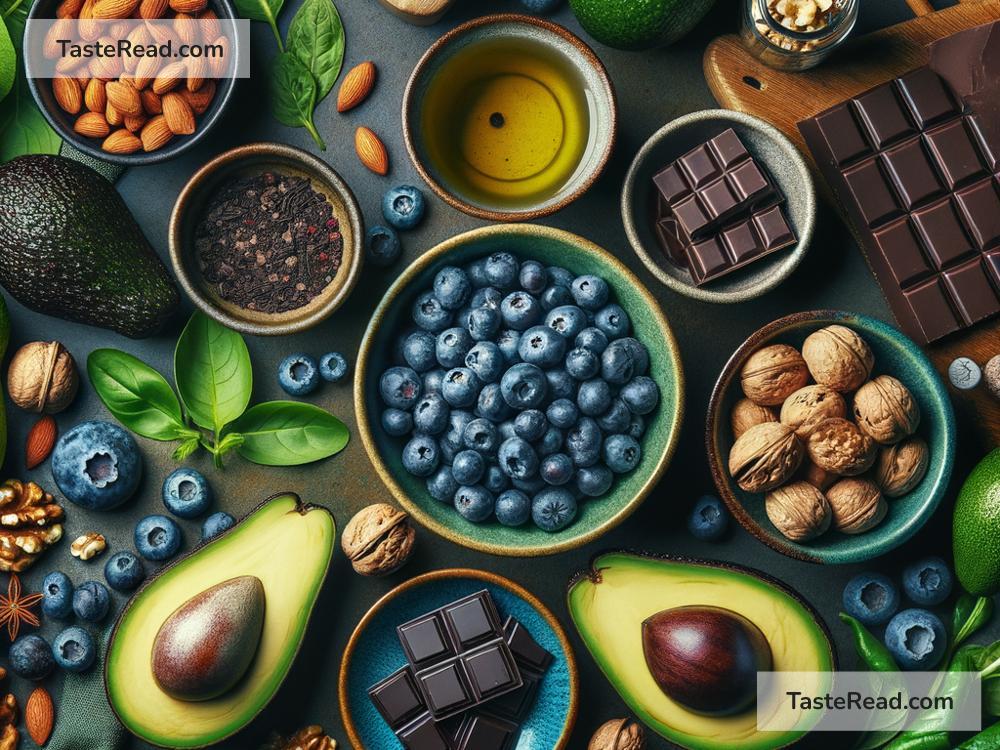Foods for Reducing Emotional Eating: A Simple Guide
Emotional eating is something many of us do without even realizing it. When we feel anxious, sad, stressed, or even bored, we often turn to food for comfort. While indulging in a treat now and then is harmless, emotional eating can lead to unhealthy habits like overeating or craving sugary, fatty, or processed foods. The good news is that certain foods can actually help reduce emotional eating by supporting your mood, reducing stress, and keeping you fuller for longer. In this blog post, we’ll explore these foods in simple terms and give you practical tips to help you make better choices when emotions are running high.
Why Emotional Eating Happens
Before we jump into the list of helpful foods, it’s important to understand why emotional eating happens. It often stems from stress hormones like cortisol or low levels of serotonin, a chemical in your brain that helps regulate mood. When you’re upset or stressed, grabbing chips or chocolate may feel like a quick fix because sugary and fatty foods can temporarily make you feel better. Unfortunately, they don’t solve the underlying problem and can leave you feeling guilty or physically uncomfortable later.
To combat emotional eating, you need foods that nourish your body, improve your mood, and keep your hunger in check. Let’s dive into some of the best options.
1. Whole Grains
Whole grains like oats, quinoa, brown rice, and whole-wheat bread are rich in fiber and complex carbohydrates. These carbs help your body produce serotonin, the “feel-good” brain chemical. Unlike processed foods, whole grains release energy slowly, keeping your blood sugar stable over time and preventing sudden cravings.
Tip: Start your day with oatmeal topped with fruit or enjoy a sandwich made with whole-grain bread to fuel your body and calm your emotions.
2. Leafy Greens
Leafy greens such as spinach, kale, and Swiss chard are packed with nutrients like magnesium. Low magnesium levels have been linked to stress and anxiety, so getting enough magnesium can help you feel more balanced. Plus, greens are low in calories and high in fiber, making them a great option for filling meals without overeating.
Tip: Add spinach to your morning smoothie or make a colorful salad for lunch.
3. Nuts and Seeds
Nuts and seeds, such as almonds, walnuts, chia seeds, and sunflower seeds, contain healthy fats, protein, and fiber — all of which help you feel full and reduce impulsive eating. They are also rich in omega-3 fatty acids, which can boost your mood and reduce inflammation.
Tip: Keep a small bag of mixed nuts and seeds on hand for a quick, satisfying snack when stress hits.
4. Fruits with Natural Sugar
When your emotions have you craving something sweet, reach for natural alternatives like fruits instead of cookies or candy. Fruits like bananas, berries, oranges, and apples are full of vitamins and antioxidants that support brain health. Bananas, for instance, are rich in Vitamin B6, which helps produce serotonin.
Tip: Pair an apple with some almond butter or blend frozen berries into a smoothie for a sweet, mood-boosting snack.
5. Lean Proteins
Foods like chicken, eggs, fish, tofu, and beans contain protein, which helps you stay full and energized. Protein also helps balance your blood sugar levels, reducing the urge to binge when emotions are high. Fatty fish like salmon and tuna are especially helpful, as they contain omega-3s that promote better mental health.
Tip: Grill some chicken for dinner or make egg muffins for a simple high-protein breakfast.
6. Dark Chocolate
Yes, chocolate can reduce emotional eating — when you choose the right kind! Dark chocolate contains less sugar than milk chocolate and is rich in antioxidants that can improve blood flow to your brain and reduce stress. The key is to eat it in moderation.
Tip: Keep a small piece of dark chocolate handy for those moments when you need a quick emotional pick-me-up.
7. Fermented Foods
Your gut health plays a big role in your mood. Fermented foods like yogurt, kefir, sauerkraut, and kimchi are rich in probiotics, which improve gut bacteria and support overall emotional wellbeing. A healthy gut can reduce anxiety and make you less likely to turn to junk food during emotional moments.
Tip: Add yogurt to your breakfast or enjoy kimchi as a side dish with your meals.
8. Herbal Teas
Sometimes, emotional eating happens because of anxiety or the simple need to feel comforted. Herbal teas like chamomile, peppermint, and green tea can calm your nerves and distract you from reaching for unhealthy snacks. Plus, they keep you hydrated and relaxed.
Tip: Brew yourself a warm cup of herbal tea in the evening when you feel stressed instead of heading to the pantry.
Practical Tips to Beat Emotional Eating
Eating nutritious foods can make a big difference, but it’s also important to take a holistic approach to emotional eating. Here are a few extra tips:
– Recognize triggers: Pay attention to when and why you reach for food. Is it stress, boredom, or sadness?
– Practice mindfulness: Pause for a moment before eating. Ask yourself, “Am I truly hungry or just emotional?”
– Keep healthy snacks handy: Stock up on the foods we mentioned above to make better choices easier.
– Stay hydrated: Sometimes thirst is mistaken for hunger.
Final Thoughts
Emotional eating is a common struggle, but choosing the right foods can help reduce cravings and improve your mood. Whole grains, leafy greens, nuts, fruits, and proteins are just a few of the delicious and nutritious options that can make a difference. Combine these healthy food choices with mindful eating practices, and you’ll feel more in control of your emotions — and your plate.
Remember, it’s okay to feel your emotions. Food can be comforting, but it shouldn’t be your only tool for managing stress or sadness. By fueling your body with nourishing foods, you’re taking a step toward not only healthier eating but a happier you.


